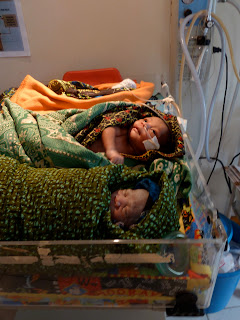The adjacent Presbyterian church (Dutch Presbyterians founded the hospital, church, nursing school and theological seminary) has an 8:00 English service and a 10:00 Chichewan service. English is the nation's official language, well-spoken by the educated, but most of the hospital's patients speak only the local Chichewa.
My camera caught a visiting choir. Many mornings we were awaken by distant sounds of practicing choirs, and when the electricity was down at night, we again heard choirs.
The hospital struggles to stay solvent. Monthly hospital income: $31,000 patient fees (I have no idea where they get hard currency), $50,000 from the government for salaries, and about $15,000 donations, for a total of $96,000. Expenses: $16,500 medications and supplies, $75,000 staff salaries, $7,300 maintenance, and $10,000 administrative costs, for a total of $109,000. The government owes $24,000 based on prior agreements for capitated ob and peds, but that would cover just two months of the projected $12,000 monthly deficit.
By contrast my local hospital, St Joseph, has about the same bed capacity, but a billion dollar annual budget--that's over 83 million dollars a month.




















